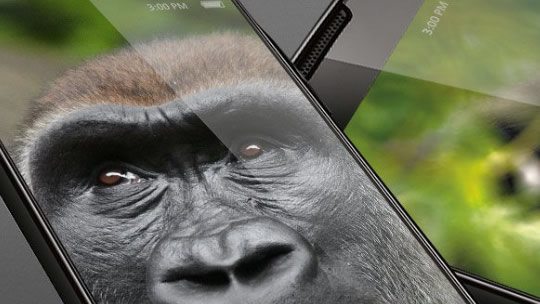Dropping your smartphone when taking a selfie could soon be in the “no problem” basket
Corning® Gorilla® Glass 5 raises the bar for protection against drops higher than ever, surviving 1.6-meter drops onto rough surfaces up to 80% of the time. Plus, even though it’s their toughest cover glass yet, it still delivers the optical clarity, damage resistance, and touch sensitivity Gorilla® Glass is famous for.

They launched their next generation of Gorilla Glass – the material used in more than 70% of smartphone screens, including on Samsung and Apple devices.
According to a recent global study*, over 85% of smartphone owners have dropped their phones at least once per year and 55% have dropped their phones three times or more. Additionally, more than 60% of smartphone owners reported dropping their devices between shoulder and waist height.
“With each successive generation of Corning Gorilla Glass, we have taken cover glass technology to new levels. Gorilla Glass 5 is no exception, extending Corning’s advantage in drop performance over competitive glasses,” said John Bayne, vice president and general manager, Corning Gorilla Glass. “With many real-world drops occurring from between waist and shoulder height, we knew improving drop performance would be an important and necessary advancement.”
Saving on repairs
Shattered or cracked screens are the number one cause of smartphone repairs and customer complaints globally.
The new glass was tested on rough surfaces – a demo for journalists showed dummy phones being dropped from a height of 1.6 meters onto a sheet of sandpaper.
Some of the phones tested survived over 20 hard drops in the lab! This is giving you and me a lot more second chances. I sure have dropped my phone many times, and will probably drop it in future too. Typically, most phone drops are from between waist and shoulder height.
As well as drops, the company said it was twice at good at resisting scratches and other damage compared to what’s currently on the market.
Device manufacturers are expected to unveil products with the new glass within the next few months.
Corning Glass has a vast interest in this product for obvious reasons. The company demonstrated the drop test to reporters at its lab in Palo Alto, California recently.
However, the company warned it had no control over eventual smartphone designs, meaning some models could be slightly weaker depending on the manufacture and design of the device. Corning’s statistics were based instead on controlled lab conditions. Testing outside the lab was not permitted.
Corning’s work in specialist glass dates back to 1879, when it produced the glass used in the iconic Edison lightbulb. By 2016, more than 4.5 billion devices use Gorilla Glass, which is created using a technique known as fusion forming. It involves placing the raw materials – sand and “other inorganic material” – into a melting pot.
Mobile phones sure has come a long way, and if you are after a business solution for your mobile fleet, give Key Technologies a call.


